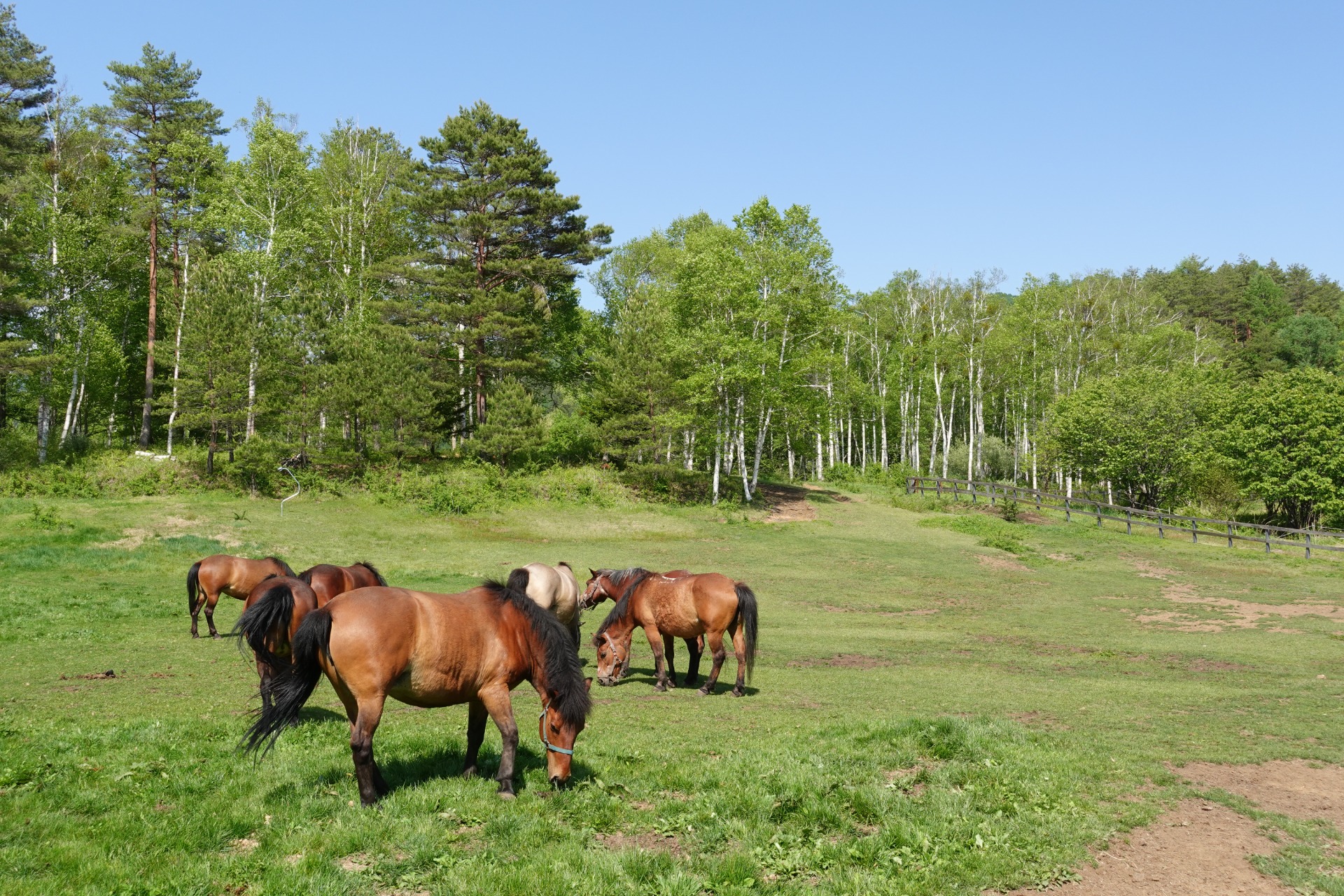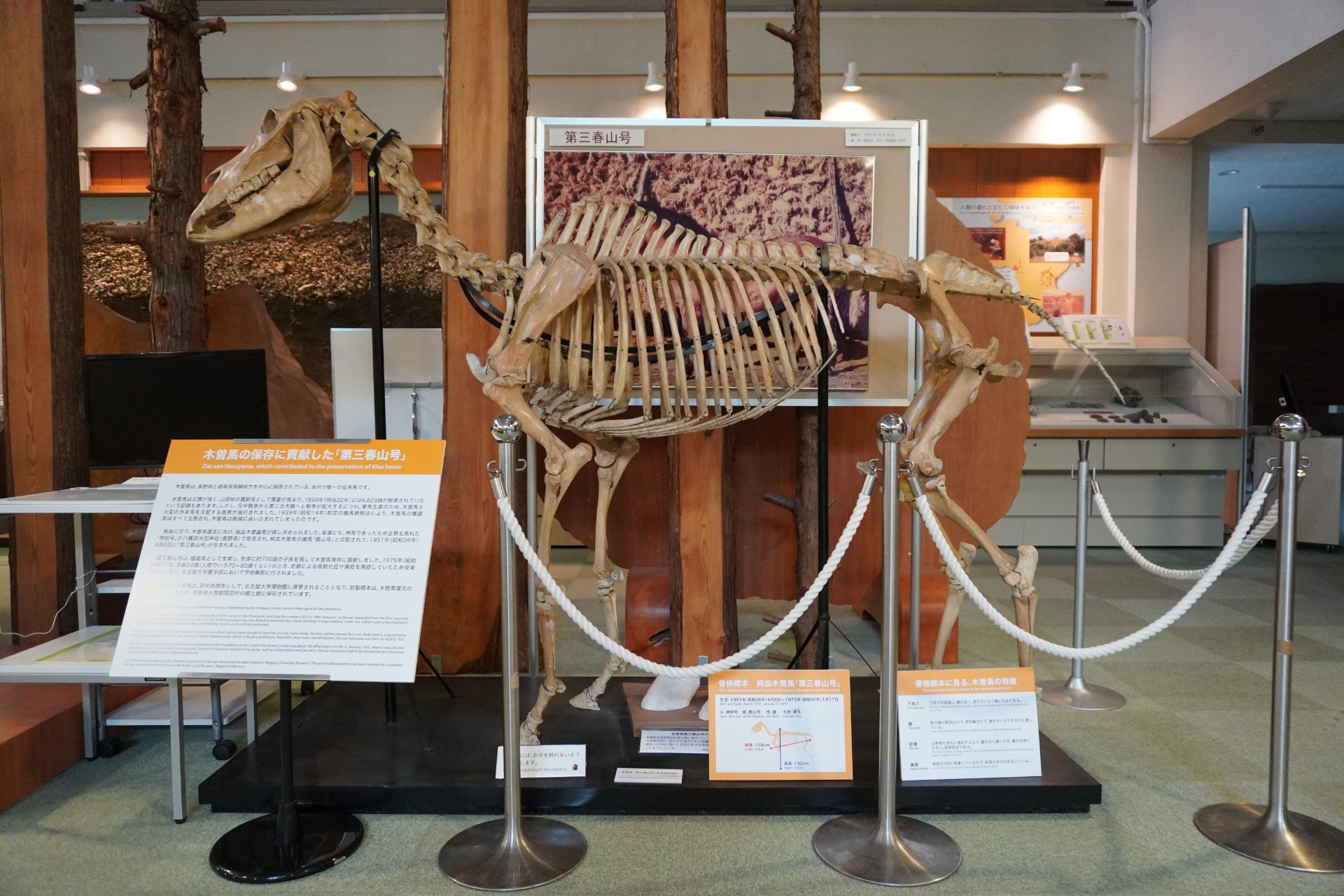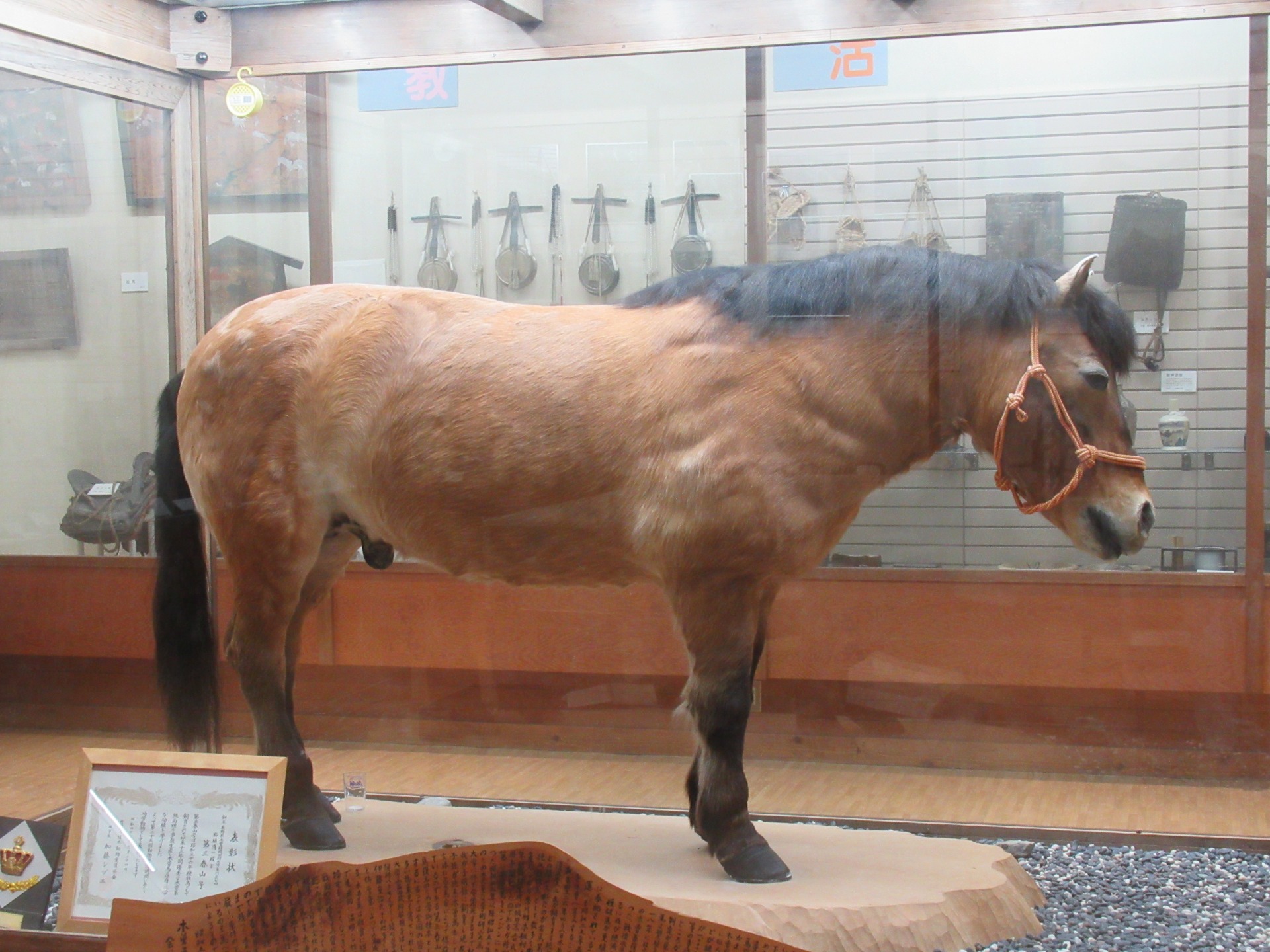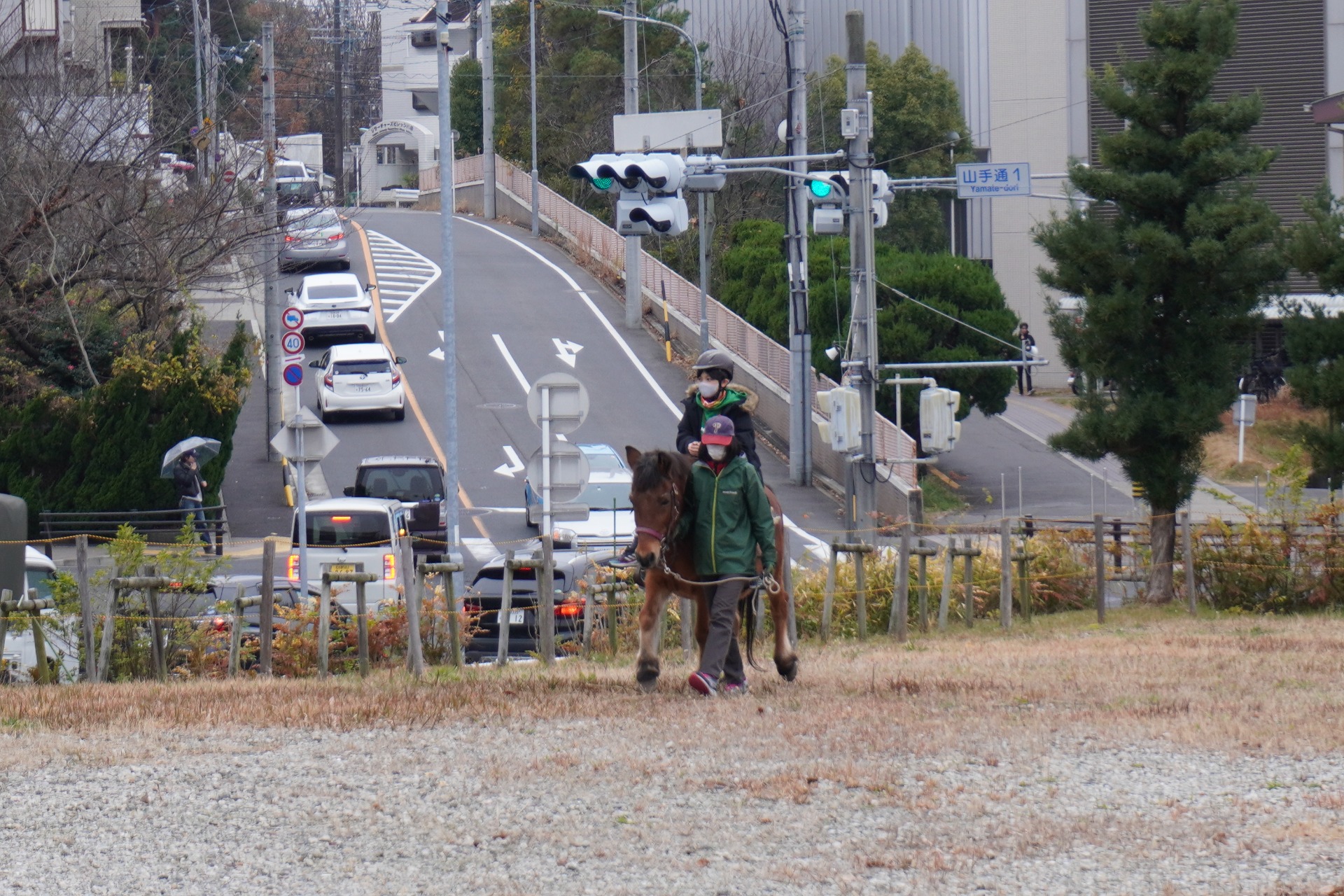きそうま
木曽馬 Kiso Horse
現在、日本在来馬(日本で昔から飼われている馬)は全国に8種類います。その中の本州唯一の在来馬が木曽馬です。
Currently, there are eight types of indigenous horses living in Japan. The Kiso Horse is one of these, and it is the only breed native to the Honshu Island of Japan.
からだ/Body
木曽馬のからだ
Kiso Horse Body
名古屋大学博物館は、純血木曽馬「第三春山号」の骨格標本を常設展示しています。木曽馬の体のつくりにはどんな特徴があるのか、来場者の方々の視点からご紹介します。
The Nagoya University Museum has a permanent exhibition featuring the skeletal specimen of the purebred Kiso Horse, 'Dai-san Haruyama.' In this section, we will introduce the unique features of its body structure from the viewpoint of our visitors.
れきし/History
木曽馬のれきし
Kiso Horse History
木曽馬は、人とともに地域文化を築いてきました。木曽馬を知ることは、木曽地域に関連する歴史や文化を知ることにもつながります。
Kiso Horses have contributed to building the local culture alongside people. In other words, understanding Kiso Horses leads to gaining insights into the history and culture associated with the Kiso region.
第三春山号/Dai-san Haruyama
第三春山号
Dai-san Haruyama
第三春山号は生涯に700頭の子孫を残し、木曽馬の保存に貢献しました。さらに、第三春山号は死んだ後も剥製や骨格標本となって、木曽馬の体の特徴を伝え、その存在感を通じて木曽馬と人との関わりを理解する手がかりとなっています。
Dai-san Haruyama, throughout his lifetime, left a legacy of 700 descendants, contributing significantly to the preservation of the Kiso Horse. Even after his passing, Dai-san Haruyama has been preserved as a stuffed specimen and a skeletal specimen, providing valuable insights into the physical characteristics of the Kiso Horse and offering a historical perspective on its past. To this day, it continues to be a source of learning.
いま・これから/To the Future
木曽馬とのいま・これから
To the Future with Kiso Horses
木曽馬は、山坂の農耕馬として働き、厩肥(きゅうひ:肥料となる家畜の糞尿)を生産してきました。しかし、木曽馬が担ってきた田畑や山の仕事はエンジンに代り、化学肥料の発達により必ずしも厩肥が必要とされなくなりました。木曽馬は生産性のない家畜として減少の一途をたどるべきなのでしょうか。
Kiso Horses worked as agricultural horses on hills
and produced manure used as fertilizer. However, work in fields and mountains
has been replaced by engines, and also manure is no longer necessary as
replaced with the development of chemical fertilizers. Does it mean Kiso Horses have become unproductive livestock?
イベント/Events
木曽馬のイベント
Kiso Horse Events
名古屋大学博物館が開催したイベントを中心に、各々の企画が立ち上がった背景、企画趣旨、開催の結果、考察などを含め、記録していきます。
また、今後開催予定の展示・イベントも掲載していきます。
・・・一部紹介中・・・
We will document events primarily hosted by the Nagoya University Museum, detailing the background, objectives, outcomes, and reflections of each project.
Additionally, we will provide information on upcoming events, including exhibitions.
・・・Partially available・・・





